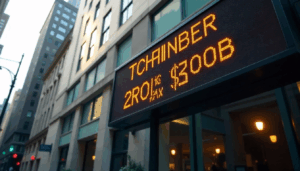Bitcoin’s Smooth Ascent From $70K to $118K Highlights Evolution From Volatile Frontiers to Wall Street Discipline
Bitcoin’s Calm Rally Marks Shift Toward Wall Street-Like Market Behavior
11/7/2025
Bitcoin’s recent surge is rewriting the script for crypto markets, signaling a shift from chaotic price swings to a more stable, Wall Street-style environment.
From Frenzied Moves to Steady Gains
Bitcoin’s bull markets used to be defined by wild volatility and sleepless traders glued to screens, fearing sudden liquidations. Now, the landscape looks different.
Since November last year, bitcoin has risen from about $70,000 to over $118,000, notching a 68% gain. But unlike past rallies, this move has been accompanied by declining volatility—a significant departure from the usual pattern where prices and volatility rise together.
This change mirrors traditional finance, where Wall Street’s VIX index typically drops during market upswings.
Cole Kennelly, founder and CEO of Volmex Labs, told CoinDesk:
“Spot prices and bitcoin’s BVIV Index appear to be developing a negative correlation, much like the relationship seen with the VIX. It’s a sign of maturing markets.”
Institutional Players Change the Game
The shift away from positive spot-volatility correlation comes largely from institutional adoption.
In late 2024, Volmex Finance’s BVIV Index—tracking 30-day implied volatility for bitcoin options—hovered between 60% and 70% as bitcoin advanced from $70,000 to $100,000. Since January, it has steadily declined, now resting around 40%, its lowest level since October 2023.
This marks a stark contrast to earlier surges, such as bitcoin’s run from $43,000 to $73,000 in early 2024, when volatility spiked from 43% to 85%.
Deribit’s DVOL index tells a similar story. Pulkit Goyal, Head of Trading at Orbit Markets, explained:
“Unlike earlier parabolic moves driven by retail enthusiasm, this rally has been steady and institutionally driven. Spot prices are higher, but realized volatility hasn’t increased in the same way, which keeps implied volatility low.”
Data from TradingView reinforces this shift, with bitcoin’s 30-day realized volatility dropping from 85% in early 2024 to about 28% over the past three months.
Why Volatility Stays Low
Greg Magadini, Director of Derivatives at Amberdata, points to institutional strategies like writing covered calls on bitcoin holdings or bitcoin ETFs such as BlackRock’s IBIT.
“Two factors are lowering volatility: bitcoin’s growing market cap and liquidity, and increased options activity by institutional investors over the past six months,” Magadini said.
Selling high-strike call options against bitcoin holdings generates yield for institutions but also puts downward pressure on implied volatility.
Kennelly added:
“Structural volatility sellers, including bitcoin treasury vehicles, have been a key force driving this new spot-volatility relationship.”
Market makers and dealers also play a crucial role. As miners and institutions sell covered calls for yield, dealers end up with long vega exposure—positions that benefit from higher volatility. To balance risk, they sell volatility, further pushing implied volatility lower even as bitcoin prices climb.
Goyal elaborated:
“Miners and long-term holders often sell covered calls to earn extra yield. Dealers accumulate these, gaining long vega exposure. As bitcoin’s price rises, dealers hedge by selling volatility, which can suppress or even reverse the usual spot-volatility relationship.”
Calm… For Now
Looking ahead, bitcoin’s steady rally and subdued volatility could continue, supported by macro trends like a weakening U.S. dollar and potential interest rate cuts. Still, market watchers caution that a sudden shock could quickly reverse this tranquility.
Philip Gillespie, managing partner at AWR Capital, summed it up:
“The macro environment favors risk assets. The dollar is weakening, and buyers keep stepping in on minor dips, holding volatility down as bitcoin approaches record highs. But any unexpected event could cause volatility to spike fast.”
For now, bitcoin’s ascent looks more like a measured climb than a wild ride, driven by institutional flows and broader economic forces—a sign that the crypto market is evolving into something much more like Wall Street.
Share this content:













